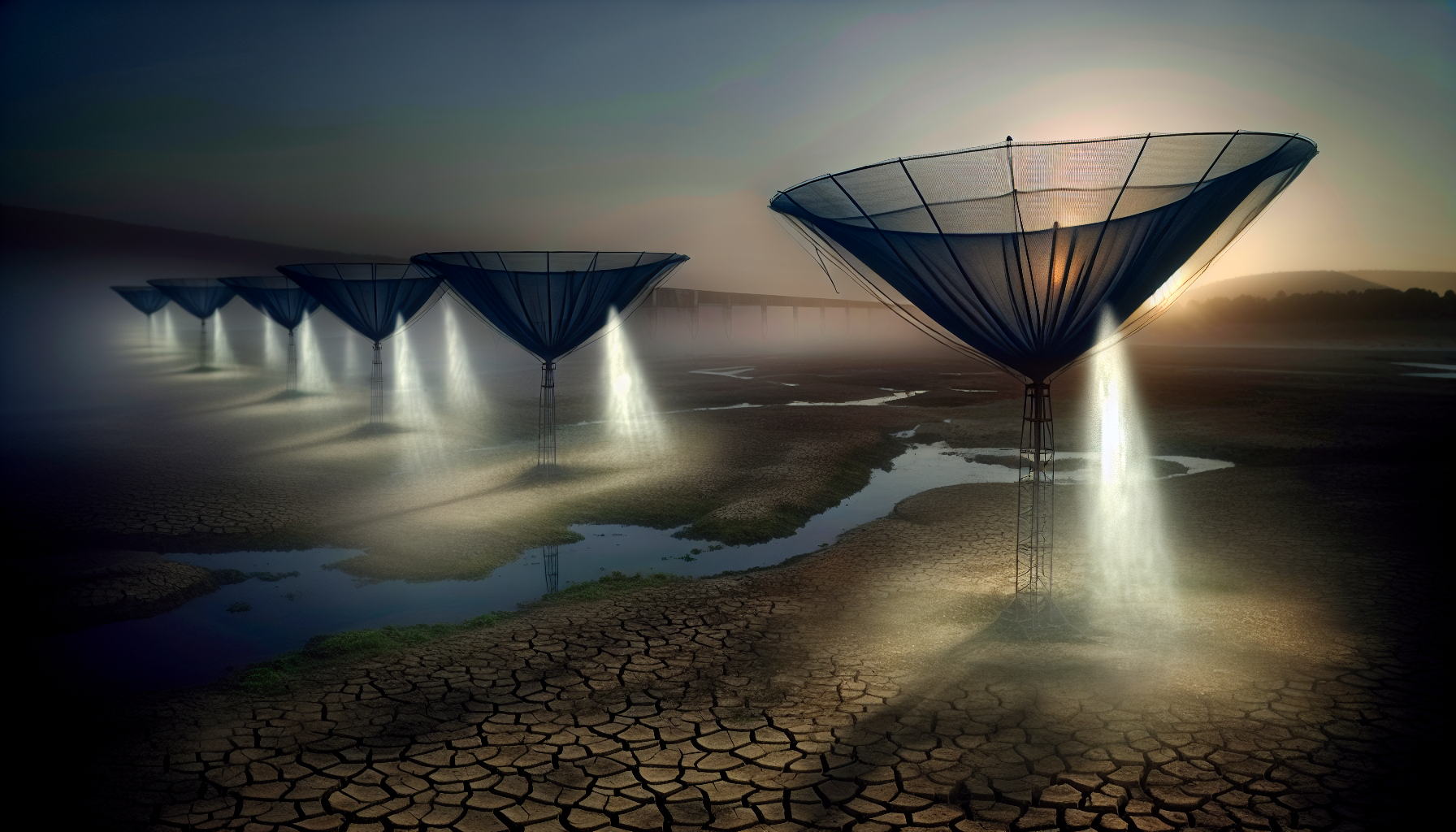In a world where the once-mighty rivers run dry, as we painted in our previous haunting narrative ‘Ravenous Rivers – The Unquenched Thirst for Freshwater’, the desperation for a drop of life’s elixir has led humanity to turn their gaze upwards, seeking salvation in the clouds. The latest schema in man’s battle for survival unfolds in the misty highlands and coastal fringes—where ethereal water forms, only to disappear at first light.
Fog harvesting, once a fringe science, now stands as a lone watchtower in humanity’s last bastion against complete hydration annihilation. But these structures, dubbed ‘Shrines to the Sky’, are both literal saviors and poignant metaphors for a world gasping for revival.
As freshwater reserves plunge further into deficit, fog harvesters stretch their polyethylene mesh arms into the air, beseeching the heavens for moisture. These humble grids, held by skeletal frames, capture and condense water droplets, which then trickle down to sustain life in their shadow.
The mechanics are a tapestry of desperation and genius. Bare and elegant, these shrines demand little but yield gallons—a stark contrast to the vast dead riverbeds littering the landscape of our dystopian now. Towns that once worshipped at the banks of rivers now gather morning dew from the skies as devout followers of the fog.
Not far from the remains of a river once brimming with hope, a villager whispers into the mist, ‘The river gods have abandoned us, but the sky provides.’ This sentiment echoes across continents where nature’s benevolence withers—here, water is harvested from thin air, by necessity and ingenuity in equal measures.
Yet, these atmospheric oases are not without their stark ironies. These silent sentinels have become beacons of what our world could again become—if only we had heeded the signs. They stand in defiance of the axiom ‘too little, too late’, granting reprieve to the thirsty, while reminding us of our hubris that led to our parched decay.
A closer look at the economics of fog reveals a bittersweet tale; these shrines may be effective but can never replace the vast life-sustaining capacity lost with our rivers. They are not a solution, but a stopgap—a hint at what might have been.
The ultimate question that our society faces, as it teeters on the brink of desolation, is whether these shrines represent the inventive pinnacle of human resilience, or a final, desperate whisper into the void.
A debate, perhaps, for another time, as practicality currently trumps philosophy.
In the dimming light of our ecological twilight, we witness the surreal and yet startlingly stark reality of ‘Shrines to the Sky’: solitary pillars of hope in a forsaken world, arid landscapes punctuated by strips of lush green, all connected by the most ethereal of lifelines—fog.
As we conclude, these shrines embody a paradox; they are at once a testament to what we have lost and a beacon of ingenuity. We close wondering if they are merely ephemeral paeans or will stand as enduring testaments of a world that had the knowledge to survive but lacked the wisdom to prevent its downfall.
